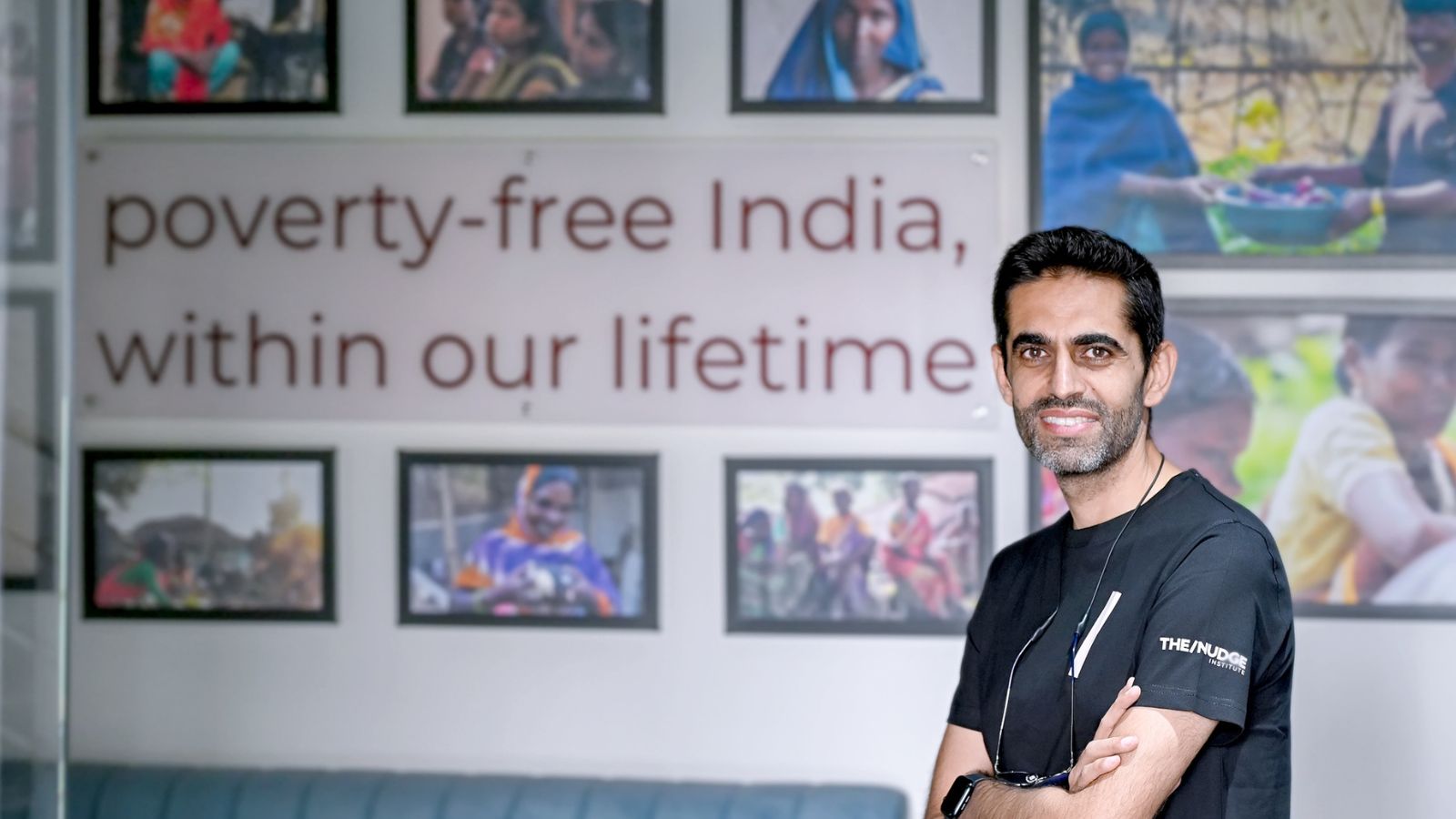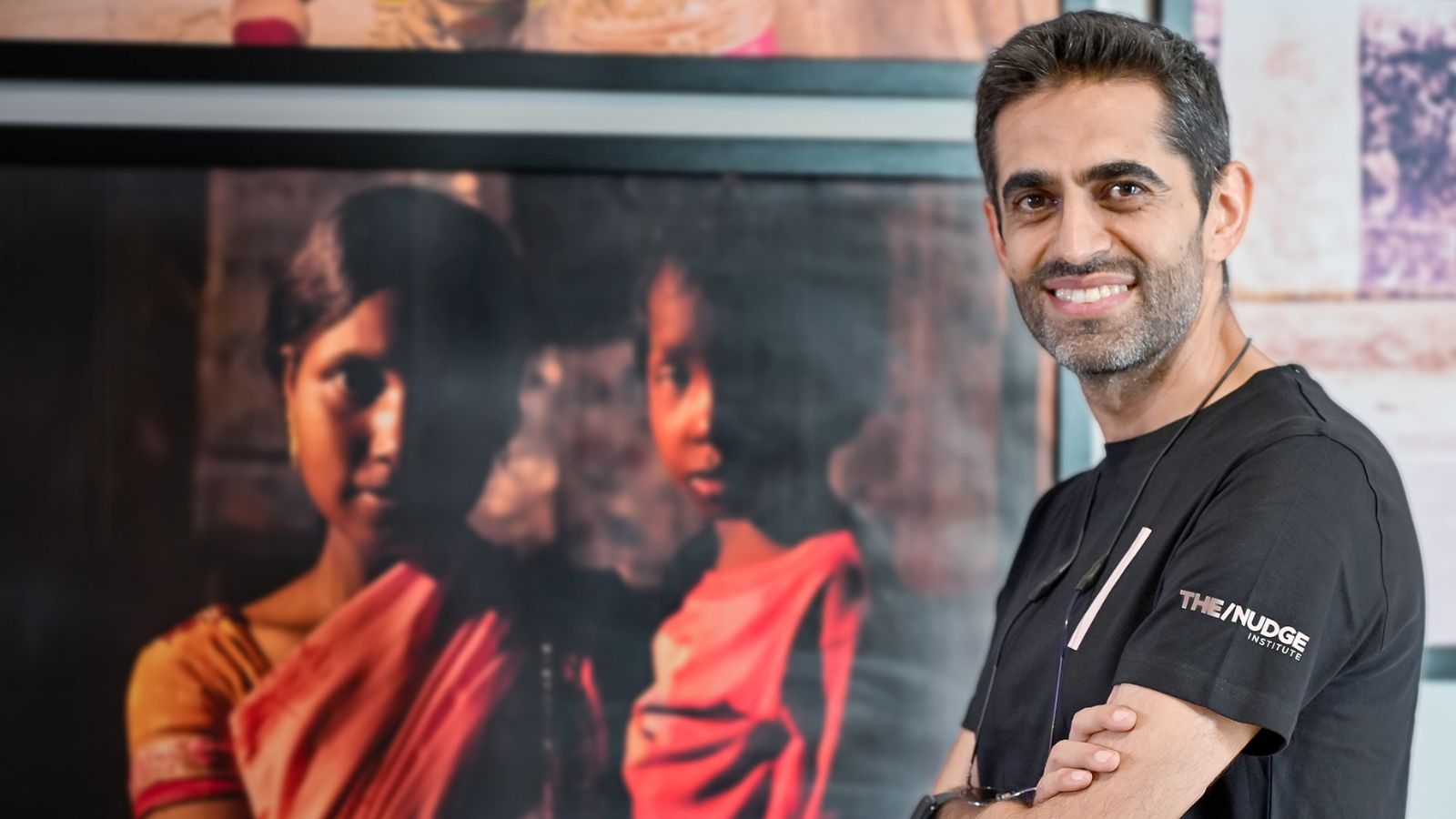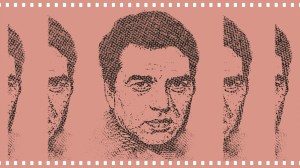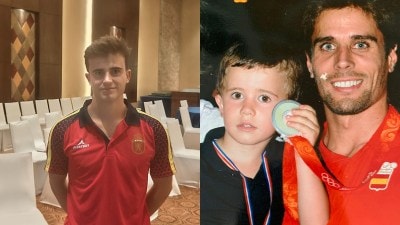Tech to fight poverty is now a reality: Atul Satija, Founder and CEO, The/Nudge Institute
The institute looks at using tech to solve the complex issue of providing livelihoods, by partnering with governments, markets and civil society to unlock capital, talent, technology and policy for creating impact at scale.
 "Tech may not be that relevant during an early or basic intervention in the livelihood sector, where the challenge is one of finding meaningful and dignified employment for the poorest of the poor, but when we look to scale such interventions, we need to look at tech," says Atul Satija. (Express photo by Jithendra M)
"Tech may not be that relevant during an early or basic intervention in the livelihood sector, where the challenge is one of finding meaningful and dignified employment for the poorest of the poor, but when we look to scale such interventions, we need to look at tech," says Atul Satija. (Express photo by Jithendra M)Atul Satija is the founder and CEO of The/Nudge Institute, a Bengaluru-based nonprofit, using technology to impact the livelihoods of millions of rural poor in India.
The/Nudge started with the purpose of working on poverty alleviation at scale, has brought together people from diverse backgrounds to create impact on livelihood generation.
The institute looks at using tech to solve the complex issue of providing livelihoods, by partnering with governments, markets and civil society to unlock capital, talent, technology and policy for creating impact at scale. While their focus is on building resilient livelihoods for the poorest of the poor in India, they work through the ecosystem of people and institutions around livelihood issues through their incubators, accelerators, awards, convenings, challenges and fellowships.
 “Our basic philosophy is that a rising tide of economic prosperity would lift all boats, and we look at many of our livelihood interventions from a tech-first perspective,” Atul Satija told http://www.indianexpress.com. (Express photo by Jithendra M)
“Our basic philosophy is that a rising tide of economic prosperity would lift all boats, and we look at many of our livelihood interventions from a tech-first perspective,” Atul Satija told http://www.indianexpress.com. (Express photo by Jithendra M)
Atul spoke to indianexpress.com on how tech is being used to tackle the trickiest problem of them all – poverty alleviation of the extremely poor in India, and how he is confident and betting on it to turn the tables around. Edited excerpts:
Venkatesh Kannaiah: Where and how does tech fit into your interventions, both in livelihood ecosystem building and in livelihood programmes?
Atul Satija: Our basic philosophy is that a rising tide of economic prosperity would lift all boats, and we look at many of our livelihood interventions from a tech-first perspective. Tech may not be that relevant during an early or basic intervention in the livelihood sector, where the challenge is one of finding meaningful and dignified employment for the poorest of the poor, but when we look to scale such interventions, we need to look at tech. Now, when we look at the extremely poor rural communities, we find that they might be untouched by all the tech gadgets and developments, say like smartphones, use of UPI. However, in India, due to our growing digital infrastructure, everyone, except the extremely poor, are reachable through tech. For the extremely poor, we find the connective layer of people or govt outreach workers or nonprofits and use tech to help them to reach the target audience or beneficiaries in a better and more focussed manner.
We either build some tech in-house or work with tech partner companies to help us.
Venkatesh Kannaiah: You have run an incubator for tech nonprofits. Can you tell us your experience of tech challenges in the nonprofit sector and how your initiative has solved them?
Atul Satija: We have so far supported around 200 nonprofits and social enterprises with tech interventions and also through our award and challenge grant programmes. We were among the first to hold an incubator for tech nonprofits way back in 2018, and have worked with NITI Aayog to create a special purpose vehicle to incubate nonprofits. We also ran accelerators for nonprofits, wherein grant funds are provided to them. We ran accelerators exclusively for women-led nonprofits.
We spend a lot of time and effort to bring in the best tech mentors who are not so easily available, to help the nonprofits. Many of them have long careers in tech and are looking to contribute to social causes. Apart from nonprofits, we also work with social entrepreneurs and have many awards and challenge grants for them to participate.
You must understand that many leading software companies do provide some amount of free or subsidised software for social causes. However, nonprofits in India may not have the technical expertise to evaluate these software or find relevant uses for them. This is where we come in, to be a kind of clearing house and handhold their transformation. However, our focus is exclusively on the livelihoods segment.
There are two of our incubatees, Tech4Good Community and Dhwani RIS, which are now trying to fill in the gap between tech companies and the nonprofit sector, where they provide off the shelf tech solutions.
We also work with social entrepreneurs and many of our incubatees have gone on to get aspirational international fellowships. They have gone on to become Acumen Fellows, Mulago’s Rainer Arnhold Fellows (poverty solutions), and Echoing Green Fellows (bold leaders working on upending unjust systems).
 “We also ran accelerators for nonprofits, wherein grant funds are provided to them. We ran accelerators exclusively for women-led nonprofits,” Satija added. (Express Photo by Jithendra M)
“We also ran accelerators for nonprofits, wherein grant funds are provided to them. We ran accelerators exclusively for women-led nonprofits,” Satija added. (Express Photo by Jithendra M)
Social enterprises who worked with us also have won recognition or found further support by diverse global institutions such as 100x Impact Accelerator by London School of Economics (LSE) and Draper Richards Kaplan Foundation (high impact early stage enterprises). They have also been recognised by MIT Solve (supporting social entrepreneurs using tech), Skoll Foundation, and Schwab Foundation. Seventeen of our entrepreneurs were recognised over the years by Forbes 30 under 30.
Most of our alumni are working in areas of livelihoods for marginalised sections of society. They are in the business of providing access to jobs or increasing employability, promoting entrepreneurship, providing skilling opportunities, and improving access to knowledge and capital.
Venkatesh Kannaiah: Tell us about your Indian Administrative fellowship and some changes technologists have brought about working in the government sector?
Atul Satija: We are in the third year of operation, and the initiative was an outcome trying to bring the expertise of technologists to the Indian government sector. There are 25 Indian Administrative fellows now, and by year-end there would be 40 of them at various government departments. They would be fellows for a period of say 18 months, and would mostly be working on tech projects in association with the government department they are attached with. They mostly work on providing tech solutions in jobs, livelihood, agritech, rural development and other socially relevant themes. We started off with the Karnataka government and now we are working with the governments of Karnataka, Punjab and the Ministry of Social Justice. Some more state governments and central ministries are keen on this fellowship. We see the demand for fellows to be in the range of 100-200 in the years to come.
Our Indian Administrative Fellows have come up with some interesting innovations, including improving online procurement systems, setting up an agritech innovation cell in Karnataka which has led to faster pilots of agritech innovations, and setting up horticulture brands. A few others are working with the Karnataka government and Wadhwani AI to implement AI-powered early pest warning and advisory solutions for cotton and other crops. These fellowships have been a great learning experience and have been successful on the ground.
Venkatesh Kannaiah: Tell us about your The/Nudge prize, the challenges and some interesting tech solutions that have come out of this initiative.
Atul Satija: You must understand that many innovations across the world have come about through what are called Grand Challenges. It might be very surprising that canned food, plastics, air travel, space travel, have all had their origins in these grand challenges. When these challenges get bigger and better, there is a lot of enthusiasm and innovators jump on to the bandwagon trying to solve these tricky problems. We have initiated many grand challenges in India. The CISCO Agri Challenge, Ashirvad Water Challenge, and the DCM Shriram AgWater Challenge are some of them.
The finalists of the CISCO Agri Challenge have raised substantial money from investors. In addition, many of them have won international awards and accolades. Takachar, which is on a mission to boost farmer incomes by scaling the productive utilisation of crop residues, was the recipient of the prestigious Earthshot Prize. S4S technologies was the winner of the CISCO Agri challenge, a full stack food processing platform reducing food losses through farm-gate sourcing and processing. S4S technologies also went on to win the Earthshot Prize.
Till 2021, India did not have an Earthshot Prize winner. It was first awarded to an Indian organisation, Takachar, in 2021,which happened to be one of our finalists from Cisco Agri Challenge. This year, out of the five organisations selected globally, two are Indian (S4S Technologies and Bhumitra) and both were the participants in The/Nudge prize .
The/Nudge Prize-Ashirvad Water Challenge with a prize purse of Rs 2.5 crore, brought innovators to create solutions that will ensure clean drinking water for all Indians by 2024. Solinas Integrity, the septic tank and manhole cleaning robot company won the prize, and it has now gone on to raise funds from venture capital.
DCM Shriram AgWater Challenge acts as an innovation catalyst for water-smart agriculture. The challenge ensures innovative solutions which are scalable for efficient and sustainable water use in agriculture.
We are looking at making these challenges bigger, perhaps with a prize money of Rs 10 crore, and solve important societal problems.
Venkatesh Kannaiah: Tell us your experience with incubating social entrepreneurs and interesting cases of them using tech to solve problems.
Atul Satija: Some of the interesting initiatives that have come out of our interventions are Karya, a data cooperative, which bridges the gap between big tech companies which spend millions of dollars collecting training data for their AI models and rural Indians who do not have access to this kind of work. Karya aims to enhance income opportunities for people in low-income communities by connecting them to AI enabled digital work. Karya is also a platform for large data design and collection, for AI companies to further use these datasets for solving real world problems. The co-founder is named as Time magazine’s 100 most influential in AI, and Karya is globally recognised as an ethical data company. The women who label the data are paid 20 times the normal wage they would get in their villages.
Solinas Integrity, which started off as an IIT Madras project with an emphasis on the water and sanitation sector, has come up with EndoBot, a pipeline inspection crawler and moved on to building HomoSEP, India’s first robot for septic tank and manhole cleaning. HomoSEP was developed with the mission to end manual scavenging in India and help industries and the government by introducing a cost-effective and efficient tech. Solinas Integrity solutions with their GIS positioning, visual analytics, and an AI dashboard, are pioneers in sewer inspection.
We also run ‘Charcha’, India’s largest collaborative convening on livelihoods aimed at fostering dialogues among influential voices from government, markets, and civil society.
Venkatesh Kannaiah: Can you tell us about your initiatives which you are working on which you think is a very long bet, which if works out will create a huge social impact.
Atul Satija: Apart from our work on using tech to empower the livelihoods problem solving ecosystem, we have our feet on the ground to create direct impact. We have built a tech platform which can be used by government and other agencies who work on livelihood issues or social inclusion programmes for the very bottom of the pyramid.
This tech stack is relevant for connecting with people who are untouched by market forces or tech gadgets. It is a carefully sequenced and meticulously designed platform which can be used for poverty eradication of the very poor, by increasing their livelihood opportunities. It works on and trains the last mile worker or government employee or nonprofit who interacts with the very poor, collects data on their assets, liabilities and skills, and matches them with potential government programmes grants or livelihood opportunities in a well sequenced Poverty Graduation Design format. It is sequenced to track the beneficiary by giving her cash and care/skill support at regular intervals, and monitoring the beneficiary and piloting his individual journey out of the deep poverty matrix.
This tech stack, named the SARATHI App, is now being used in conjunction with the Union Ministry of Rural Development and the governments of Jharkhand, Rajasthan, Karnataka and six other states. Over the last few months, the app has been deployed successfully and has unlocked government benefits to the tune of around Rs 2,000 crore.
This intervention can dramatically alter the lives of people at the very bottom of the pyramid, as the earlier interventions had been episodic and not sustainable. These interventions have been successful and it is time to scale it up. The tech to fight poverty is now a reality, and we are betting on it.







